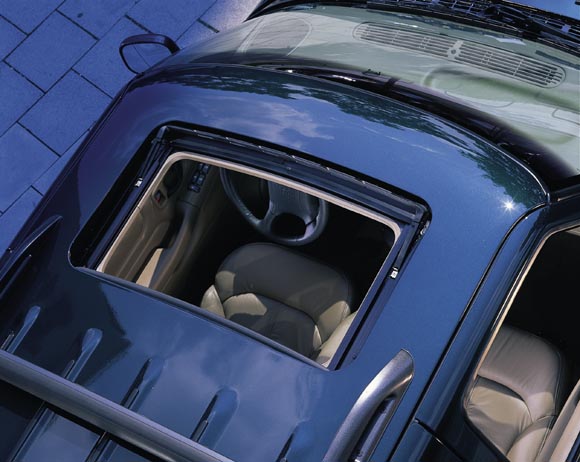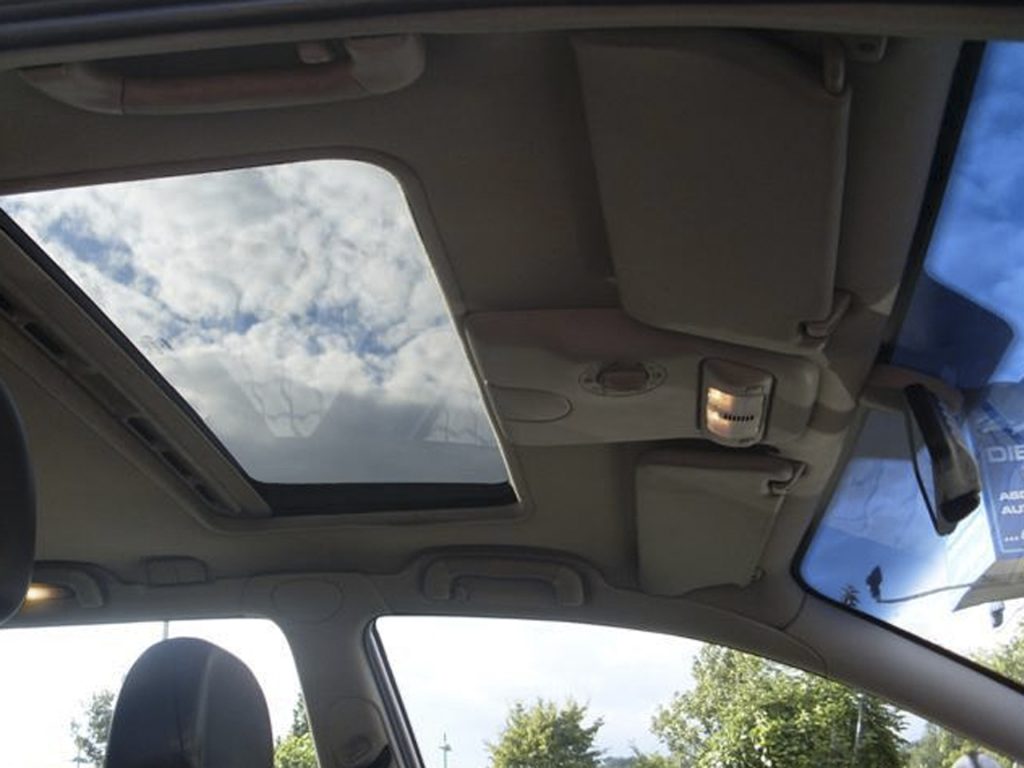Open roof panels were a concept that has already been present since the 19th century when horse-drawn carriages were considered the most advanced vehicles. Back then, these carriages had folding canvas tops. By the time carriages had evolved into cars, European car companies had started manufacturing cars with canvas or metal-covered roof openings. At the same time, the patented Pytchley sunroof was created. Nowadays, sunroofs, moonroofs, panoramic roofs, and Targa tops have become common features on many vehicles–turning many into half or full convertibles.
Before diving into the world of sunroofs and moonroofs, consider this: Understanding the features, costs, and practicalities of each type of roof opening will empower you to make an informed decision. Consulting with automotive experts or dealership representatives can provide valuable insights. Ultimately, by taking a thoughtful approach, you can choose the roof that perfectly complements your driving style and elevates your car experience for years to come.
The Key Differences Between The Sunroof and The Moonroof
In general, sunroofs and moonroofs are the same thing with a few minor differences between each other.
- Structural Differences:
Sunroofs and moonroofs have structural characteristics that are widely different at a better glance. Sunroofs are typically made with metal or glass panels that can be tilted open or slid back to varying degrees, allowing for ventilation and sunlight. On the other hand, moonroofs are primarily fixed glass panels integrated into the vehicle’s roof without opening. This structural variation fundamentally differentiates the two features regarding functionality or design.
- Operation and Functionality Distinctions:
The biggest difference between sunroofs and moonroofs regarding operation is functionality. Sunroofs are designed to open, allowing occupants to adjust the amount of sunlight and airflow entering the vehicle. They can be manually operated or powered with the push of a button. On the other hand, moonroofs are fixed in place and cannot be opened. While they offer panoramic views and natural light, they don’t offer the same level of ventilation and versatility as sunroofs.
- Design and Aesthetic Differences:
Sunroofs and moonroofs are also different in terms of their design and aesthetic appeal. Sunroofs, with their ability to open and close, often feature sleek and streamlined designs, complementing the vehicle’s overall design. They can enhance the exterior by adding a dynamic element to the roofline. In contrast, moonroofs are typically larger glass panels that contribute to a more expansive and open interior feel. They provide a seamless integration with the vehicle’s roof, giving it a modern and luxurious appearance.
What is A Sunroof
The concept of the sunroof predates the moonroof, introduced by car manufacturers as a feature that allows sunlight to enter the car through its open roof. This led to the coining of the term “sunroof”. A sunroof is a solid panel on the vehicle’s roof and seamlessly blends with the vehicle’s colour. It can be either tilted open or completely removed to allow light and air to enter.
Types of Sunroof
Sunroofs come in various types, each offering unique functionalities and designs to suit different preferences and vehicle models. Some of the most common types include:
- Pop-up sunroofs: these are manually operated panels that can be titled or lifted open
- Spoiler sunroofs: integrated into the vehicle’s roof and designed to tilt up at the rear for ventilation
- Inbuilt sunroofs: also known as sliding sunroofs, these are installed flush with the vehicle’s roof and can slide open or tilt upwards.
Advantages and Disadvantages of Sunroofs
Advantages:
- Enhanced driving experience: sunroofs provide a sense of openness and connection with the outdoors, enhancing the overall driving experience.
- Improved ventilation: opening the sunroof allows fresh air to circulate within the vehicle, reducing the need for air conditioning
- Natural light: sunroofs let in natural light, brightening the interior and creating a more pleasant atmosphere for passengers.
Disadvantages:
- Increased noise: when open, sunroofs can increase wind noise and road noise inside the cabin, which could bother some passengers.
- Potential leaks: poor installation or maintenance of sunroofs can lead to water leaks during rainy conditions, causing interior damage and discomfort.
- Cost: vehicles equipped with sunroofs are often higher priced due to the added feature and the complexity of installation.
What is A Moonroof

The term ‘moonroof’ was coined back in 1973 by John Atkinson, a marketing manager at Ford for the Continental Mark IV. Gradually, it became the prevailing term for any transparent glass roof panel.
A moonroof is distinguished by its glass construction and the fact that it can’t be removed from the vehicle. While they can slide or tilt open to allow light and air, moonroofs include an interior sliding panel for direct access. This panel is coordinated with the vehicle’s interior, ensuring a cohesive aesthetic with the surrounding materials. In more modern vehicles, moonroofs are preferred over traditional sunroofs.
Types of moonroof:
Like sunroofs, moonroofs also come in different types. Though fewer, each still offers unique features and designs to cater to various preferences and vehicle models. The most common types include:
- Panoramic moonroofs: these are large, fixed glass panels that extend over a significant portion of the vehicle’s roof, providing a wide view of the sky for both front and rear passengers.
- Sliding moonroofs: Also known as sunroofs, these large, fixed glass panels can be opened or tilted to varying degrees to allow fresh air and sunlight into the vehicle. They offer versatility in terms of ventilation and can enhance the feeling of openness inside the vehicle.
Advantages and disadvantages of moonroofs:
Advantages:
- Enhanced visibility: a moonroof can provide passengers with a clear view of the sky, allowing for more natural light and scenery while travelling.
- Aesthetic appeal: a moonroof’s sleek design adds to the vehicle’s overall aesthetic and gives it a more modern look.
- Increased resale value: vehicles with moonroofs often have higher resale values due to their desirable features and appeal to potential buyers.
Disadvantages:
- Limited ventilation: unlike traditional sunroofs, moonroofs can’t can’t be opened so they limit airflow and ventilation in the vehicle.
- Heat buildup: the large glass panel of a moonroof can contribute to heat buildup inside the vehicle, especially in hot weather, requiring additional use of air conditioning to keep the inside comfortable.
- Potential for leaks: improper installation or maintenance of moonroofs can lead to water leaks during rainy conditions, causing interior damage and inconvenience.
Things to Consider When Choosing Between a Sunroof and Moonroof
- Your Area’s Climate
One of the primary factors to consider when deciding between a sunroof and moonroof is the climate in which the vehicle would mostly be used. In places where sunny days are common and rainfall is infrequent, a sunroof may be an ideal choice. Its ability to open allows occupants to enjoy fresh air and sunlight, which can enhance the driving experience. However, a moonroof may be more suitable in areas with extreme temperatures or frequent precipitation. Its fixed design provides panoramic views and natural light without the risk of water leaks or heat loss, making it a practical option for different weather conditions.
- The Vehicle’s Type and Size
The type and size of the vehicle also play a significant role in determining whether a sunroof or moonroof is the preferred choice. Compact vehicles with limited roof space may benefit from the sleek design and space-saving functionality of a sunroof. Its ability to tilt or open provides added versatility without compromising interior space. Conversely, larger vehicles like SUVs or luxury sedans may accommodate the larger fixed glass panel of a moonroof more effectively. Its expensive design enhances the overall spaciousness of the vehicle’s interior, creating a luxurious and spacious environment.
- Cost Implications
Consider the cost of installation and maintenance for each option. Often, sunroofs are less expensive to install and maintain compared to moonroofs, which may have additional features like tinted glass or power-operated shades. When making your decision, factor in long-term decisions.
Emerging Technologies in Sunroof and Moonroof Design
Exploring the future trends and innovations in sunroof and moonroof design offers insights into the evolving landscape of automotive technology and consumer preferences. Here’s a look at emerging technologies and predictions for the future of roof openings in automobiles.
- Smart glass integration. Future sunroofs and moonroofs may feature smart glass technology that can adjust its opacity or tint level based on sunlight intensity or driver preferences. This adaptive glass can enhance comfort and privacy while reducing glare and UV exposure inside the vehicle.
- Integrated solar panels. With the growing emphasis on sustainability, future roof openings may incorporate integrated solar panels to harness solar energy and power auxiliary systems such as climate control or onboard electronics. This innovative feature could improve energy efficiency and reduce the vehicle’s environmental impact.
- Augmented reality displays. Advanced sunroofs and moonroofs could integrate augmented reality (AR) displays directly into the glass panel, providing passengers with immersive entertainment or navigation experiences. AR overlays can enhance the driving experience by overlaying relevant information onto the surrounding scenery visible through the roof opening.
- Self-cleaning and anti-fogging technology. Future roof openings may incorporate self-cleaning and anti-fogging technology to maintain visibility and clarity in various weather conditions. Hydrophobic coatings and ultrasonic vibrations could prevent water droplets from accumulating on the glass surface, ensuring a clear view at times.
Predictions for the Future of Roof Openings in Automobile
- Increased Adoption of Panoramic Moonroofs. As consumers demand more spacious and open interiors, panoramic moonroofs are expected to become increasingly popular in a wide range of vehicle segments. Manufacturers may offer large glass panels that extend from the front to the rear of the vehicle, providing passengers with an expansive and heightened sense of openness.
- Integration with vehicle connectivity systems. Future roof openings could be seamlessly integrated with vehicle connectivity systems, allowing passengers to control the sunroof and moonroof remotely via smartphone apps or voice commands. Enhanced connectivity features could also enable automatic opening and closing based on predetermined preferences or environmental conditions.
- Advanced safety and security features. Manufacturers will continue to prioritize safety and security in roof opening design, incorporating features such as reinforced glass, automatic collision detection, and anti-pitch sensors to prevent accidents and intrusions. Advanced security measures could also deter theft attempts and unauthorized access to the vehicles.
- Customization and Personalized Options. With advancements in manufacturing technology, consumers may have the opportunity to customize their sunroof or moonroof with various options, such as tint levels, glass patterns, and integrated lighting effects. Personalization features could cater to individual preferences and enhance the vehicle’s overall aesthetic appeal.
To conclude, sunroofs and moonroofs are very different things, but they’re both great additional features that can enhance your driving experience. Overall, the decision lies in your preference and lifestyle. Both options offer distinct advantages and can significantly enhance the comfort, aesthetics, and enjoyment of your vehicle.



